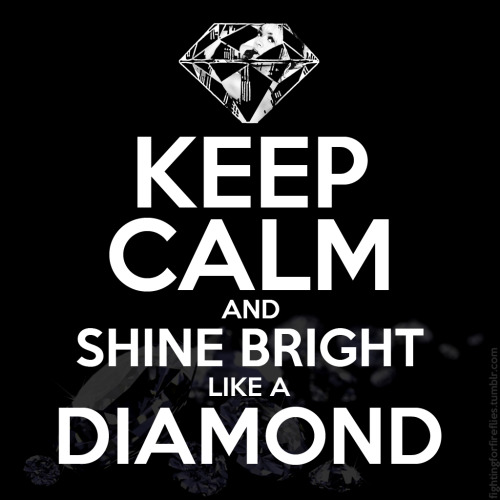Welcome to “How to Write Ad Copy Like Don Draper“!
This two-week course will provide you with tactics to not only write copy that allows you to sell a brand, product or service better; it will show you how to view a company through the eyes of its target market. Once you know what people are looking for, it is much easier to sell to them.
For this first class, we want to start with identifying the ways you can makes a company less abstract and more tactile. How can you begin to relate to a can of Pepsi, or feel relieved when you see the Molly Maid car pull up to your home to clean once a week, or even begin to get misty-eyed when you hear Sarah Mclachlan’s song Angel play during an ASPCA commercial? This all stems from a brand’s personality.
Getting to Know You – Even Brands Have Personalities!
A brand’s personality is formally defined as “a set of human characteristics associated with the name of a product, service or company,” but that’s just fancy brandspeak for “adjectives used to describe a brand.” So, quite literally, brand personality attributes are “brand adjectives.” For example, Marlboro is associated as a “masculine” brand, while Virginia Slims is seen as “feminine.” IBM is seen as “older,” while Apple is perceived as “younger.” Indeed, Apple is almost known entirely for its brand personality attributes — innovative, stylish, intuitive, cool, casual, easy-going and friendly.
There are five steps we, as writers, can use to identify the right adjectives related to a brand. We’ll start with the most popular way that advertising agencies have used, even before the era of Mad Men:
1. You Remind Me Of…
This is one of the most widely accepted exercises in branding. Ask yourself if your organization was a car, what kind of car would it be? Why? Get specific, and define the year, make, model and color. Is it a coupe or sedan? Import or domestic? Convertible? Are you always the safe choice, like Volvo? Or are you aging and conservative, like Chrysler? What kind of bells and whistles would it have?
2. Animal, Vegetable or Mineral?
If your organization was an animal, what kind of animal would it be? Are you tenacious like a badger? Strong like a elephant? Fast like a leopard? Nimble like a cat? Proud and keen like an eagle?
The most popular animal people pick when describing their business is a dog. It’s usually a safe bet, because you can attribute dogs to “loyalty”. However, If you’re going to choose a dog, be specific and clarify the breed. Would you pick the family-oriented Golden Retriever or Labrador Retriever? Or how about something more courageous, like a pit bull?
Vegetables are not as commonly used to describe a brand outside of the food industry, but you may be able to draw some inspiration from these legumes. Why? Veggies are good for you, boost immunity and are an integral part to any well-balancd diet. Couldn’t you see a financial services company talking about “boosting their client’s immunity” to changes in the stock market?
Finally, we can’t forget the minerals. Harder than diamonds, rarer than rubies and more precious than emeralds – minerals can also help you showcase the uniqueness and longevity of a brand.
3. Personification
Close your eyes and imagine your organization’s brand is a real person — a member of your leadership team who is sitting right beside you. Are they a man or a woman? Are they young or old? How are they dressed? Where would they sit at your next management meeting — the head of the table or the back of the room? Did they go to college and get a master’s degree, or are they street smart?
Personification is the artistic representation of an abstract quality or idea as a person. When you think of words like “quality”, “trust”, “comfort” or “love”, it can be very difficult to transmit that feeling into an advertisement that everyone views favorably. That’s why it may help to work on the fourth step, which is…
4. Finding a Spokesperson
When you started to personify your brand, did you think of a celebrity? It’s a natural thing to do, right? If your organization was a famous celebrity, who would it be and why? Maybe an actor like Denzel Washington? Or a sports icon like Dan Marino? Perhaps someone like Oprah? What traits do they possess that are shared with your brand? More importantly, how will others identify with them?
5. Archetypes
Finally, we get into nitty-gritty details. It’s time to discuss a new approach to highlighting a brand’s personality. This approach was popularized by Margaret Mark and Carol S. Pearson in their 2001 bookThe Hero and The Outlaw: Building Extraordinary Brands Through the Power of Archetypes. Three of the archetype sets are interchangeable but mean the same thing, such as:
- the Rebel and the Outlaw
- the Champion and the Hero
- the Everyman and the Regular Guy/Gal
The first image you will see below is the archetypes broken up by two dimensions: self-focused vs. group-oriented, and order vs. change. For example, if the culture of your company is to exercise control, you are likely an archetype in the upper semicircle.
The next image gives you a few examples of which companies you can envision as these archetypes. Nike is a “Champion/Hero” archetype. Is this because many champions wear Nikes? No; Nike challenges you to become a winner and stop making excuses for not achieving your goals (“Just Do It.”). Richard Branson’s Virgin brand and Harley-Davidson are excellent examples of the Rebel archetype. Here are more:
Once you can designate an archetype for a company, you are ready to begin the first assignment for this class.
Assignment #1
Simply pick a brand, any brand! There is a Brand Attribute Form (BAF) that you should complete and submit for review through Skillshare. Once you have identified your brand and have described what makes this brand unique, you are ready to move onto learning “What Motivates People to Buy?“.







